I recently found that OM Systems (formerly Olympus) will be releasing a newer version of their Tough camera series. The new one will be the seventh version, and the first one under the new management at OM Systems. I have the sixth iteration. This camera is known for its ruggedness that includes waterproofness, shockproofness, underwater capabilities, macroscopic talents, anti-freezing systems, and more. All in a tight little package. Being a jack of all trades, however, comes with many limitations. One being the lack of zooming power and lens accessories. For about 280 Canadian pesos, you can get a “tele converter” that has optical zoom from “4x to 7x”, but the reviews of this accessory have not been too kind. I do hope OM systems bring out a backwards compatible lens, but that’s neither here nor there because this post is not about cameras but birds. It is relevant only in the sense that the following pictures are a bit blurry and now you know why.
Birds come and go through out the year along this part of their migratory route in the southwestern corner of the province of British Columbia. I encountered a few of them during a hike the other day, and I strained the capabilities of my gear to get a few snapshots of the darting flighty creatures. The camera has a motion capture mode but I did not use it.
The first bird species to make an appearance was a northern flicker of the woodpecker family. It has a distinct loud call. Their back feathers are a beige colour, and they have a fancy black collar up front. They flash red under the wings when flying, but unfortunately I was not able to capture it in flight. It seemed to be looking for something or someone, and then it quickly flew into the woods and disappeared.
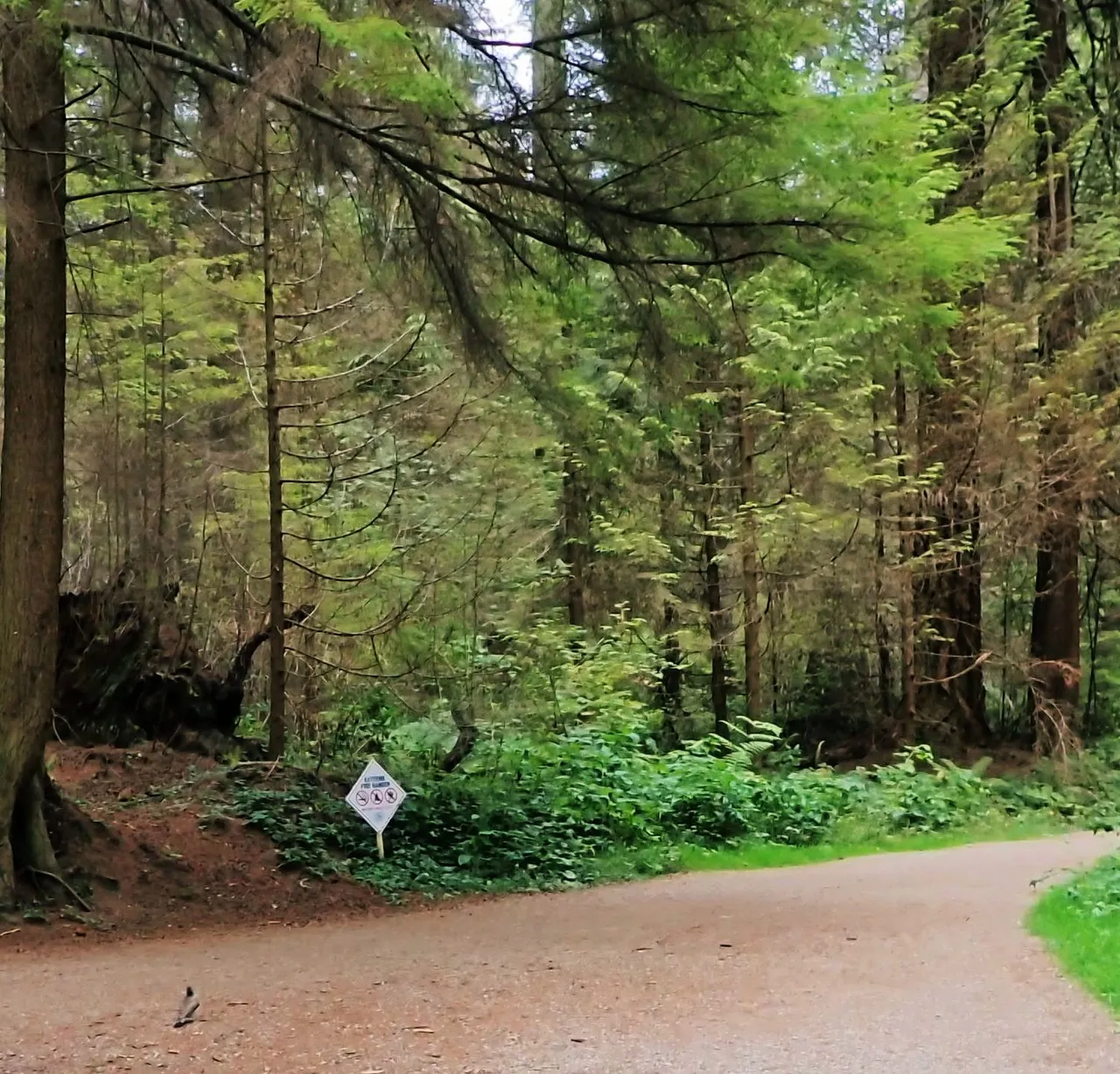
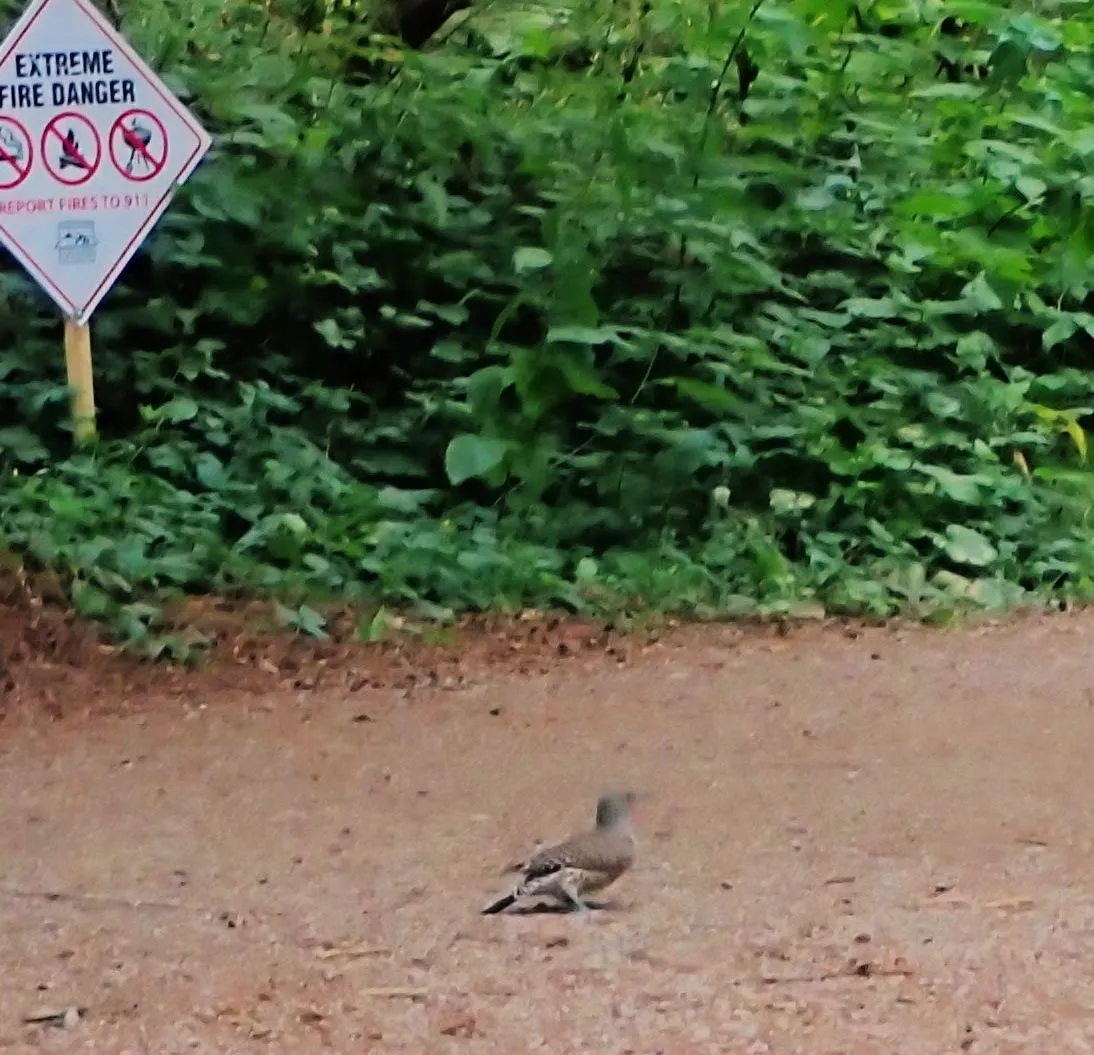
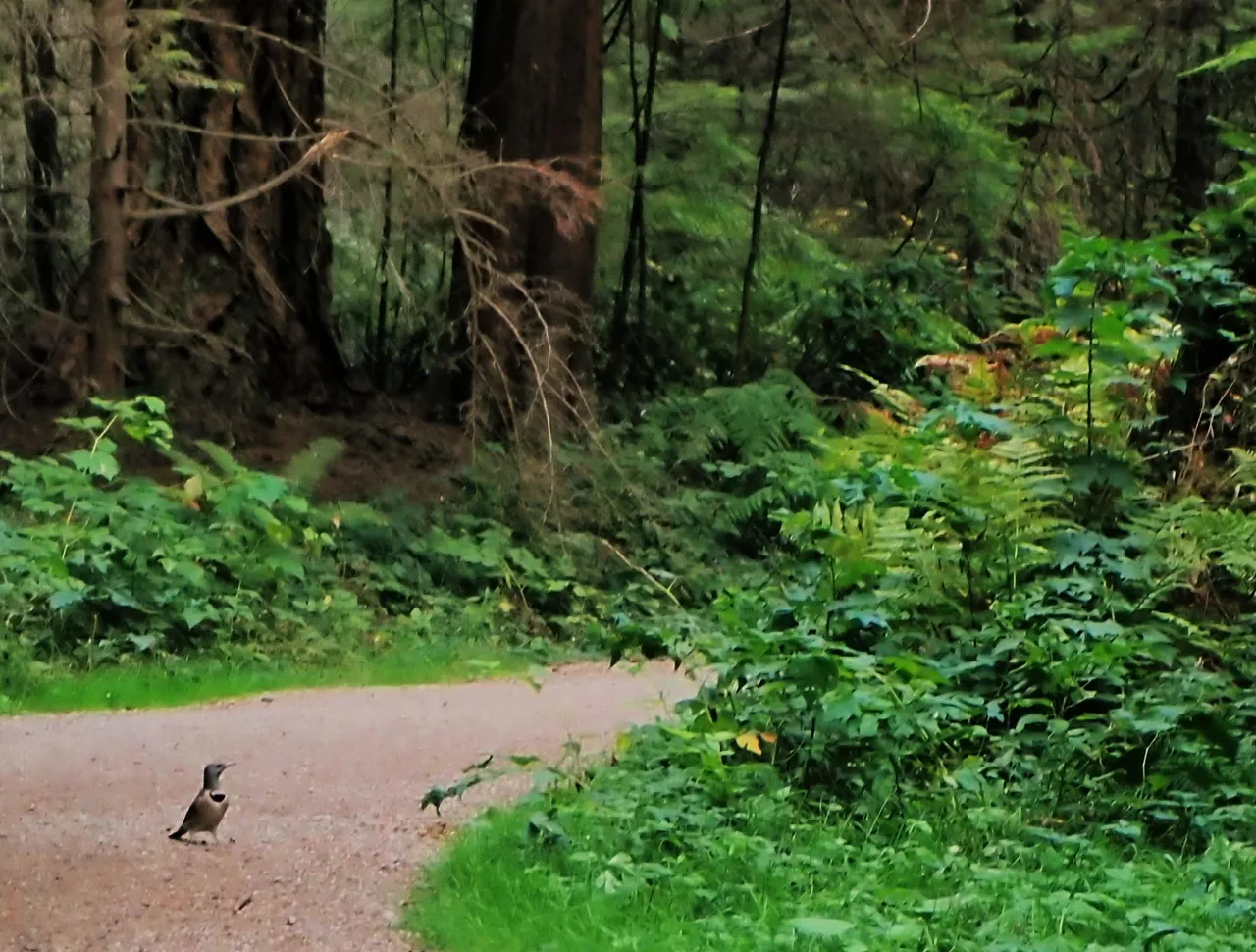
Black capped chickadees are fairly common around here. This one was perched on a branch along with a companion. They’re recognizable because of the distinct and dashing black cap they sport.
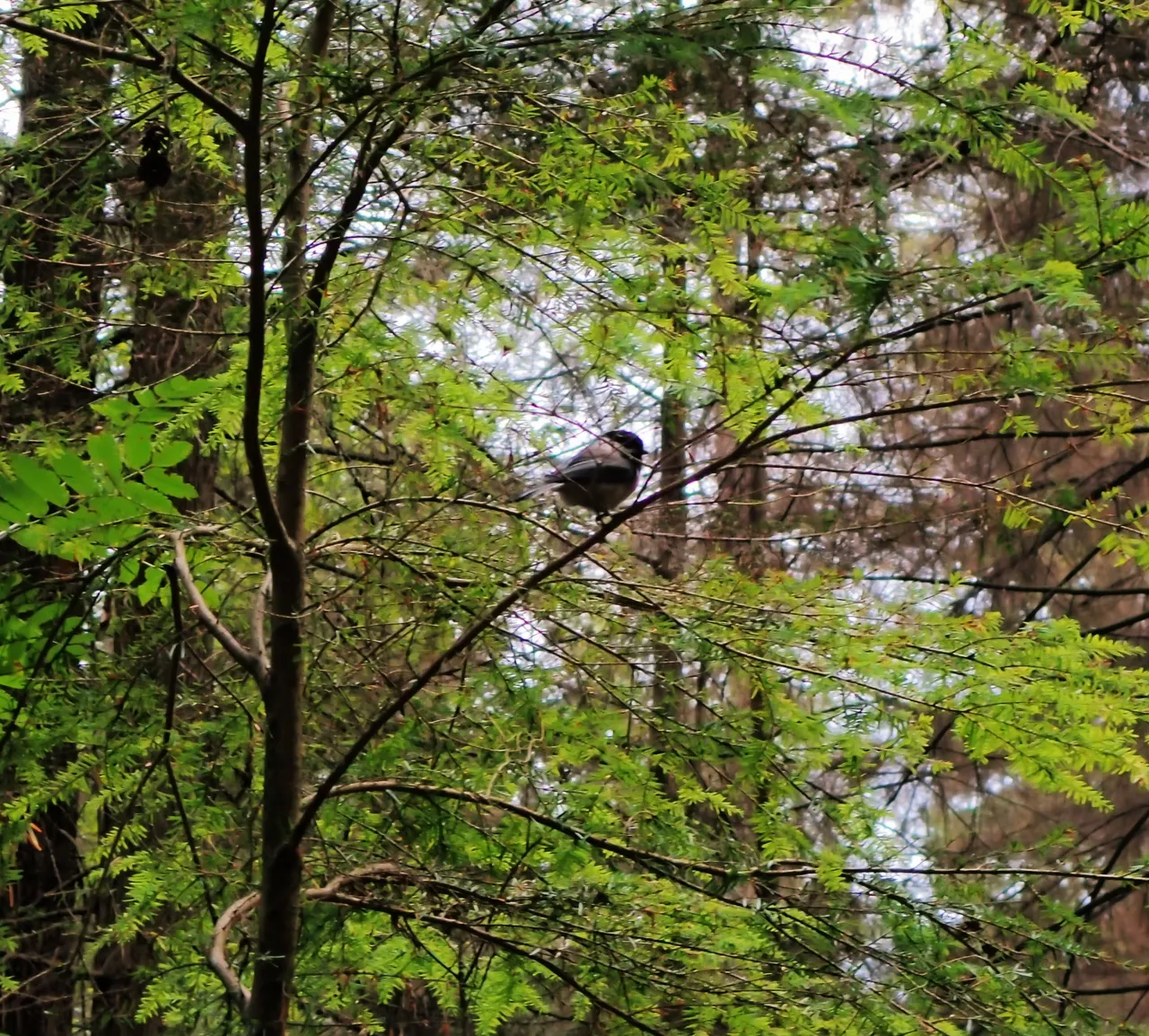
Further down, I heard a loud call, perhaps a squawk, which sounded complex when compared to other birds in the area. I recognized it right away. It was the Steller's jay. Looking through the trees, I saw a whole pack (or flock?) of them frolicking among the trees. These are clever birds that live among the leaves and branches of pines, spruces, and firs.
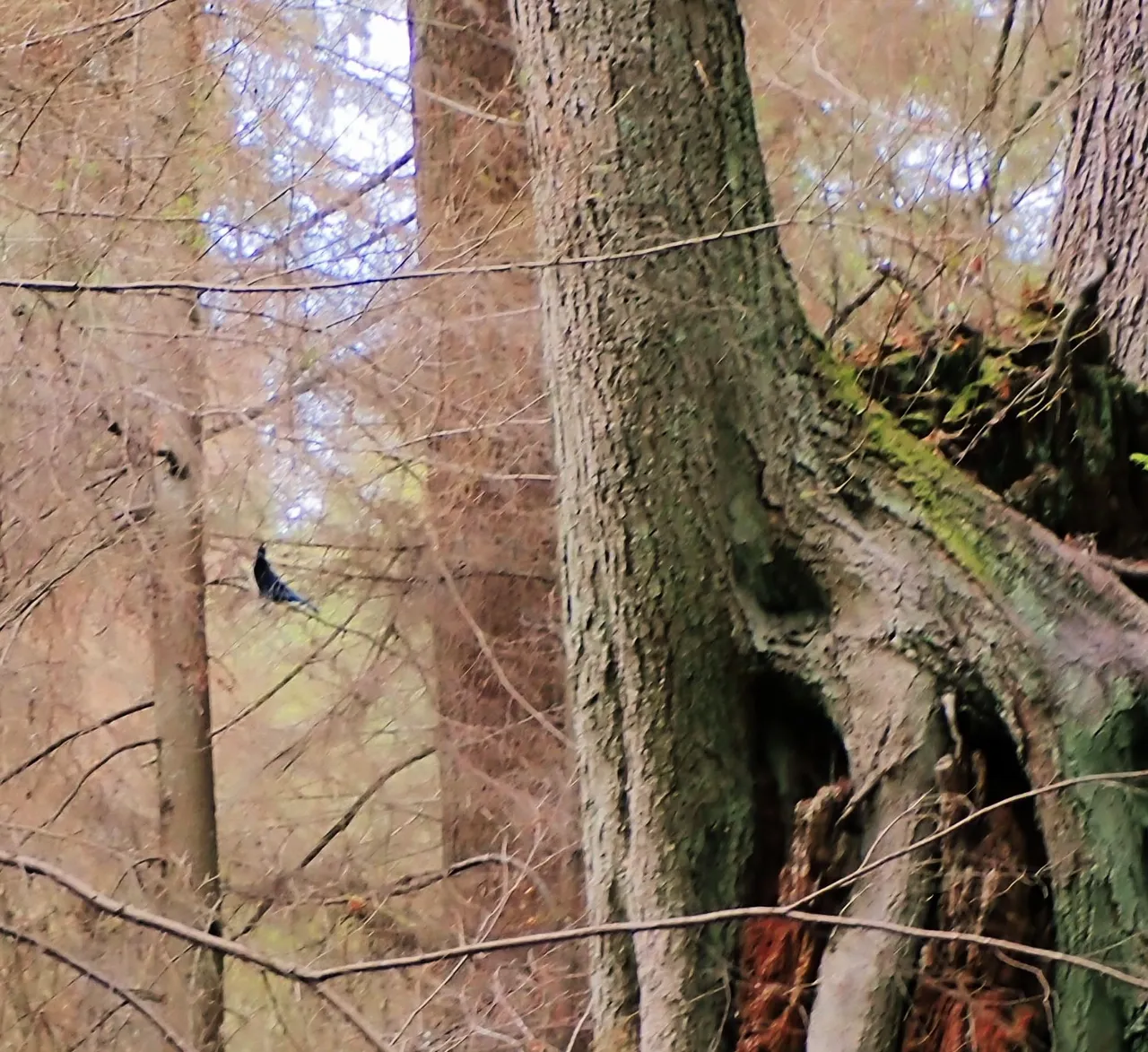
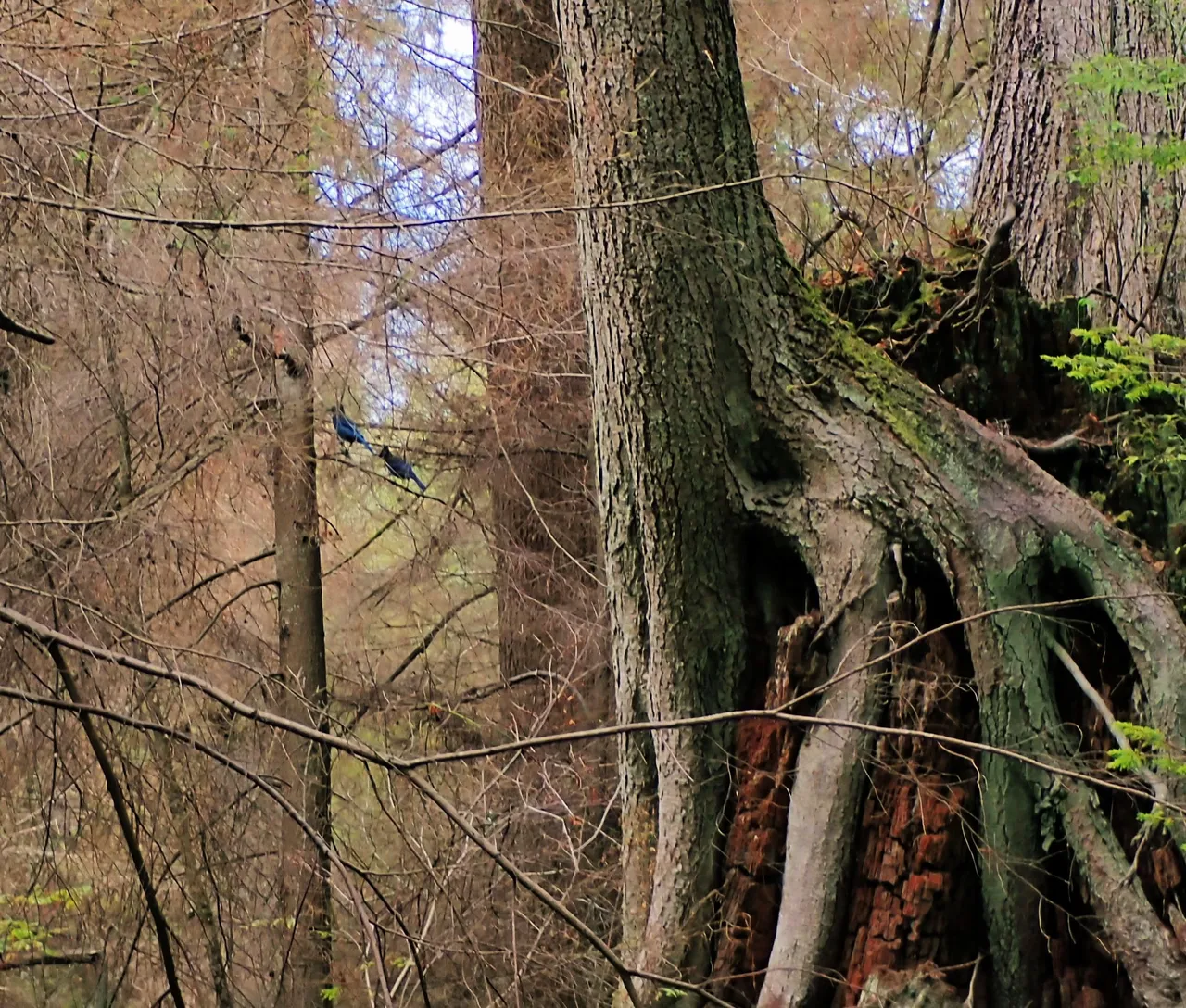
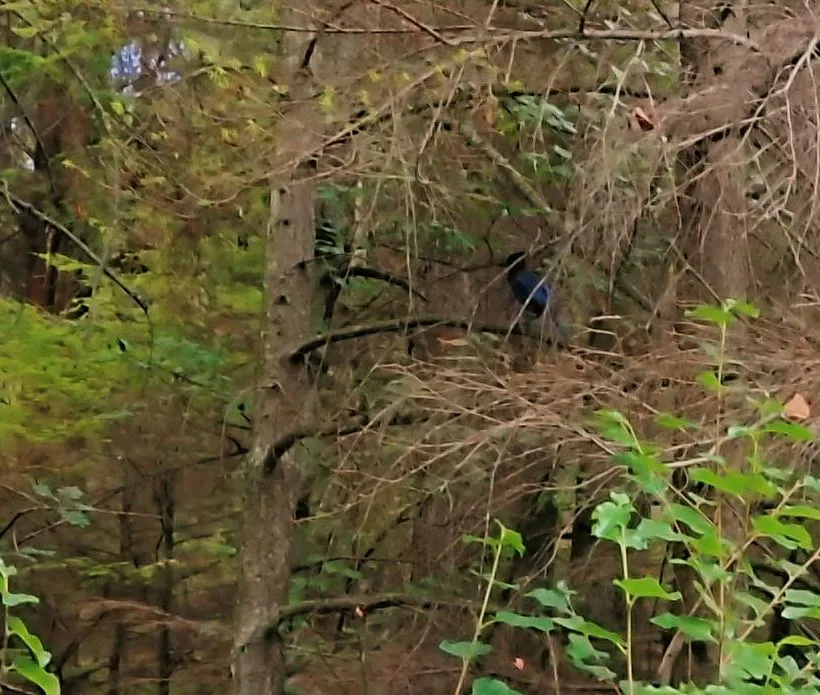

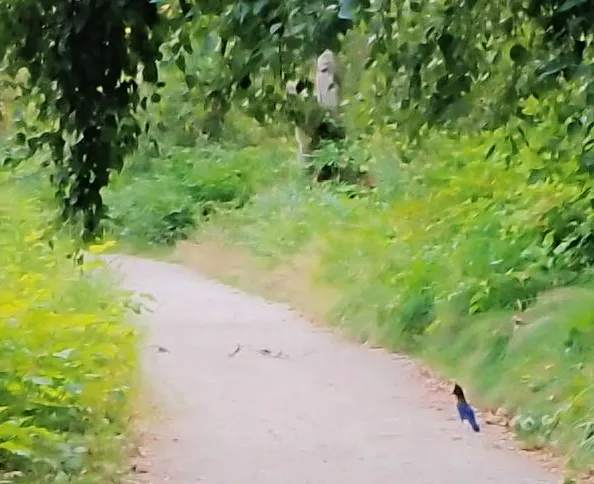
Certain areas of these trails are popular with visitors, some of whom take it upon themselves to feed the birds. I saw a couple of ladies with bird food in the palms of their outstretched hands while the chickadees perched on their fingers and pecked at the bits. I wanted to take a picture but aside from the privacy issues, I really didn't want to encourage this behaviour.
Further down the road, I noticed that some birds were bold and approached me without fear. The one in the lower right corner was one of them (the jay kept its distance). It hopped here and there until it was nearly at my feet.
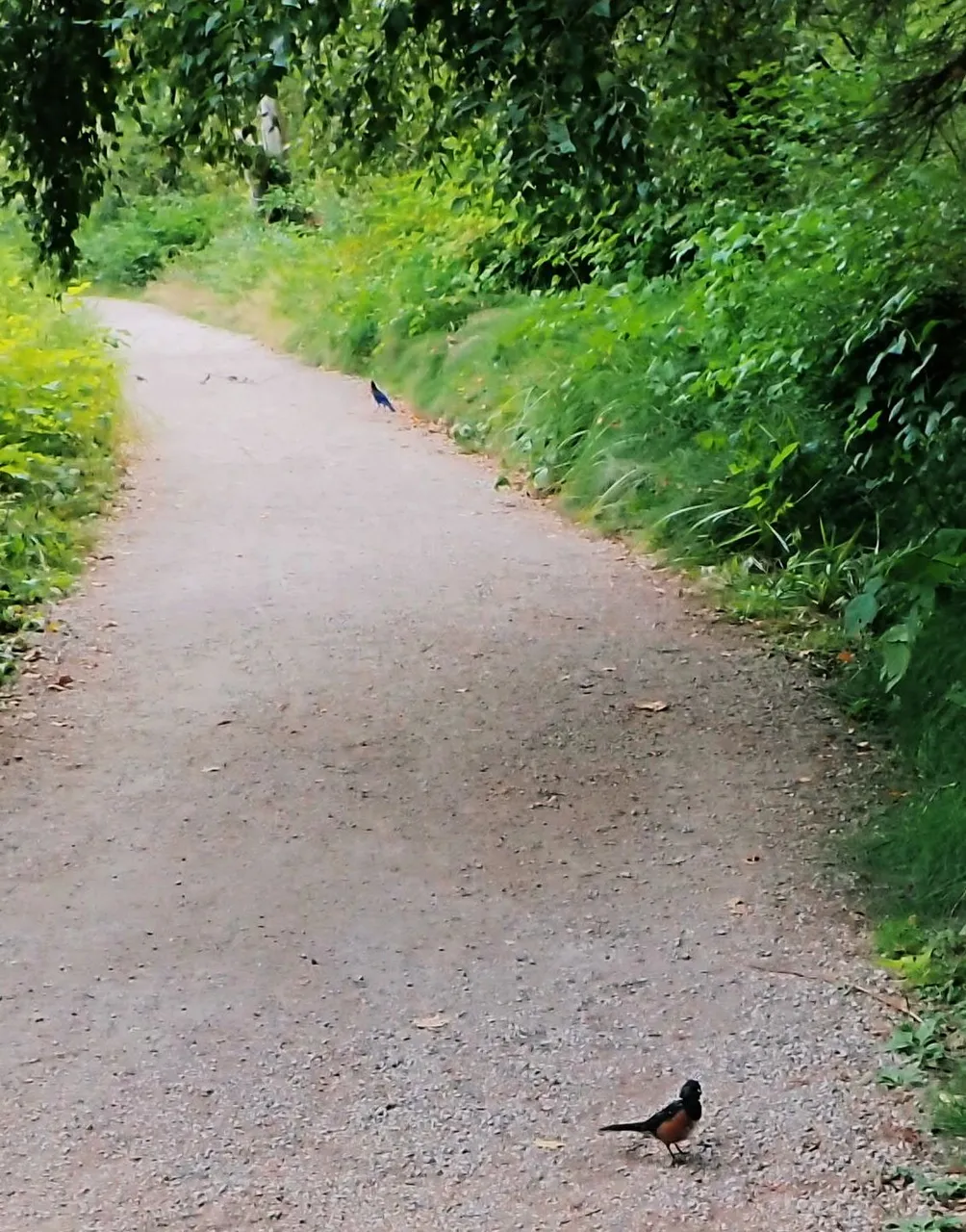
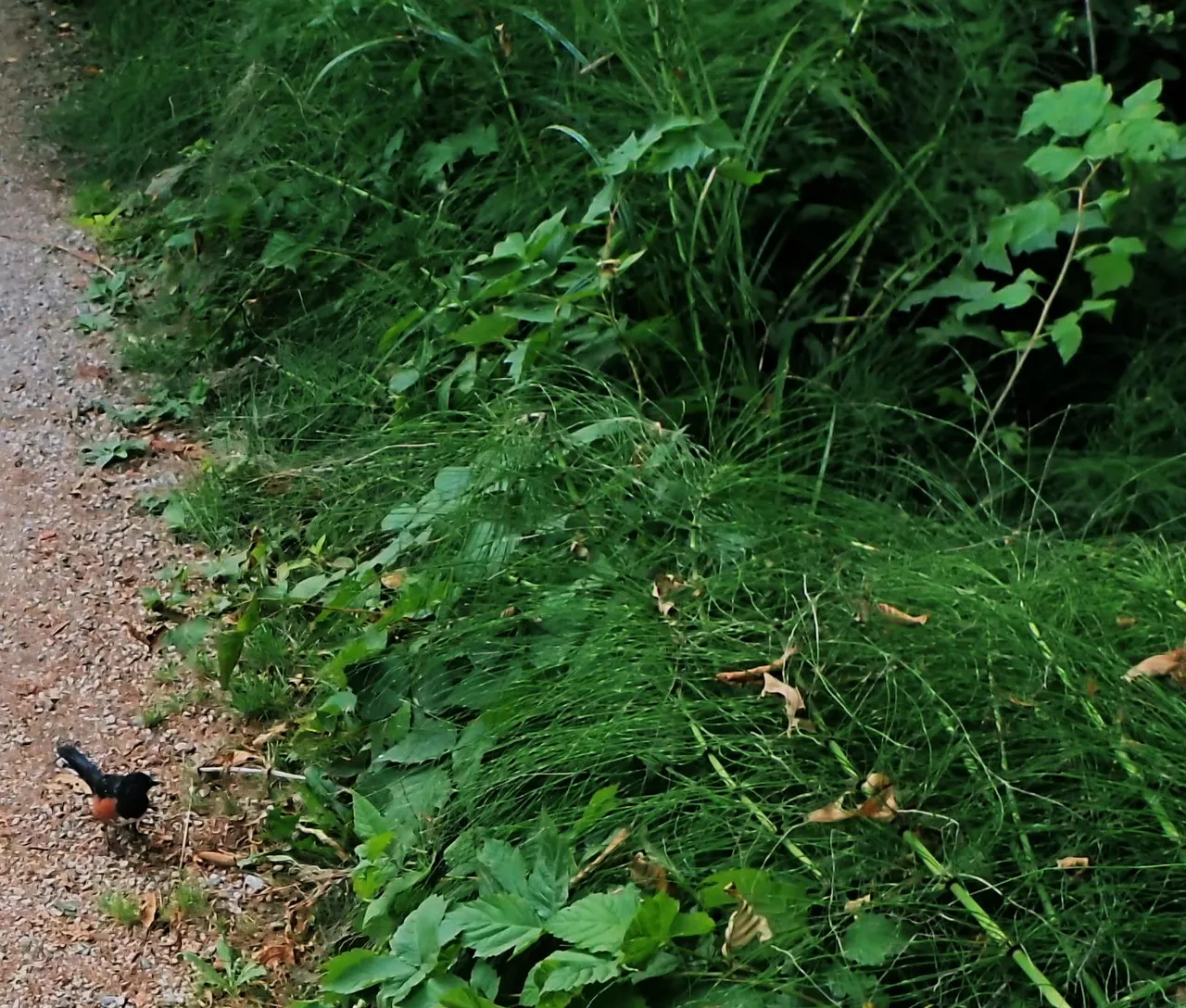
I do not know the species of this particular bird, but I think it's a robin. I did not feed it, but I did say hi.

Images by @litguru